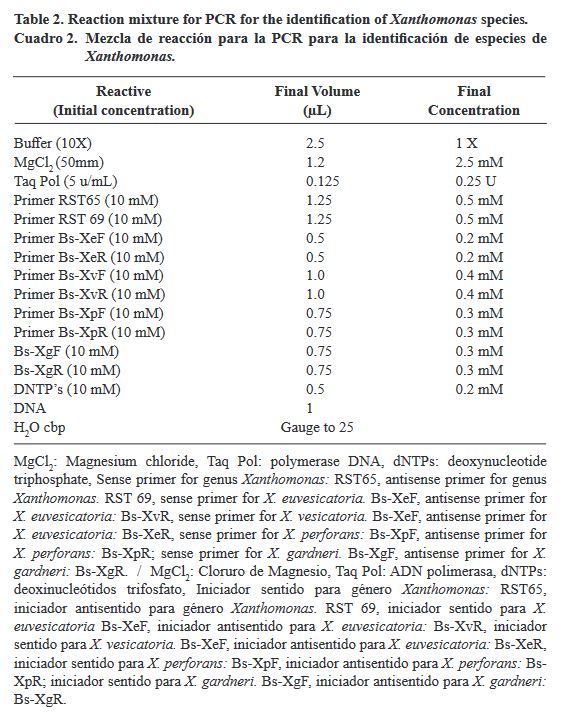Article filters
Search Papers
Identification of species and physiological races of Xanthomonas isolated from tomato (Solanum lycopersicum) and chili pepper (Capsicum annuum) in Sinaloa, Mexico
By Laura Belén Tapia de la Barrera, Manuel Alonzo Báez Sañudo, Raymundo Saúl García Estrada, Juan Manuel Tovar Pedraza, José Armando Carrillo Fasio
* Corresponding Author. Email: / Institution:
Accepted: 10/July/2023 – Published: 31/July/2023 – DOI: https://doi.org/10.18781/R.MEX.FIT.2210-2
Abstract Bacterial spot of tomato and chili pepper, caused by four species of Xanthomonas and various races, is one of the diseases with the greatest impact on horticulture worldwide. The aim of this study was to identify the species and physiological races of Xanthomonas present in tomato (Solanum lycopersicum) and chili pepper (Capsicum annuum) crops in Sinaloa, Mexico. For this purpose, samples with typical symptoms of bacterial spot were collected in commercial fields of the different municipalities in the state of Sinaloa. Ninety-three bacteria were isolated on semi-selective medium as nutrient agar and yeast extract-dextrose. A total of 47 bacteria were identified as Xanthomonas by a combination of morphological, pathogenic, biochemical, physiological, and molecular tests. In addition, to characterize the morphological race of each strain, differential tomato (four) and chili pepper (six) lines were used. Molecular diagnostic using specific primers indicated that 83% corresponded to X. euvesicatoria, 10.6% to X. perforans, and 6.4% to X. vesicatoria. At the physiological race level, races T1, T2, T3, and T5 were detected in tomato; while the Xanthomonas races detected in chili pepper were P0, P3, P6, P8 and P10. This information updates previous data on the distribution of races of Xanthomonas that infect chili peppers in Sinaloa, since races P6 and P10 are reported for the first time.
Keywords: Bacterial spot, differential lines, hypersensitivity reaction













